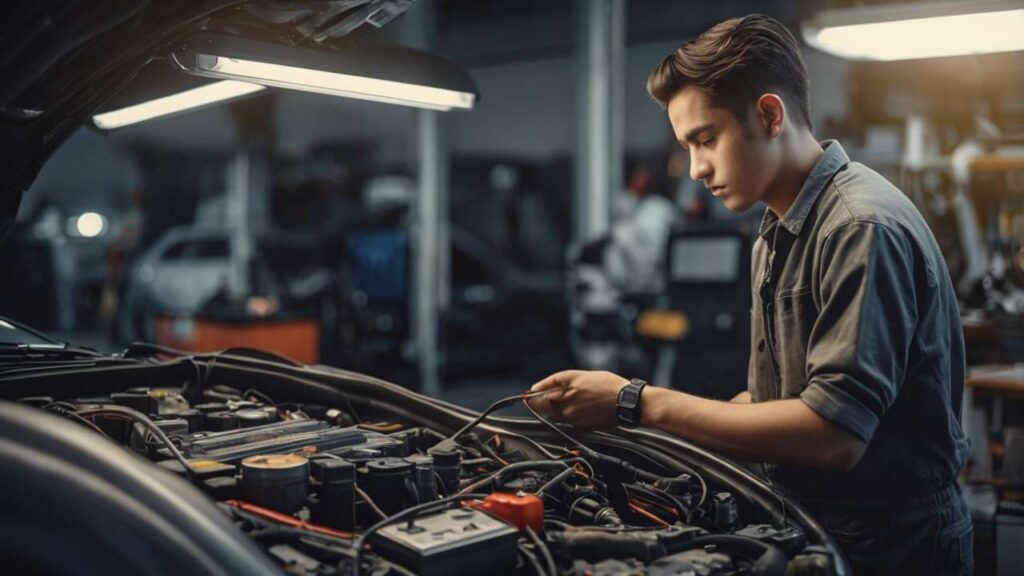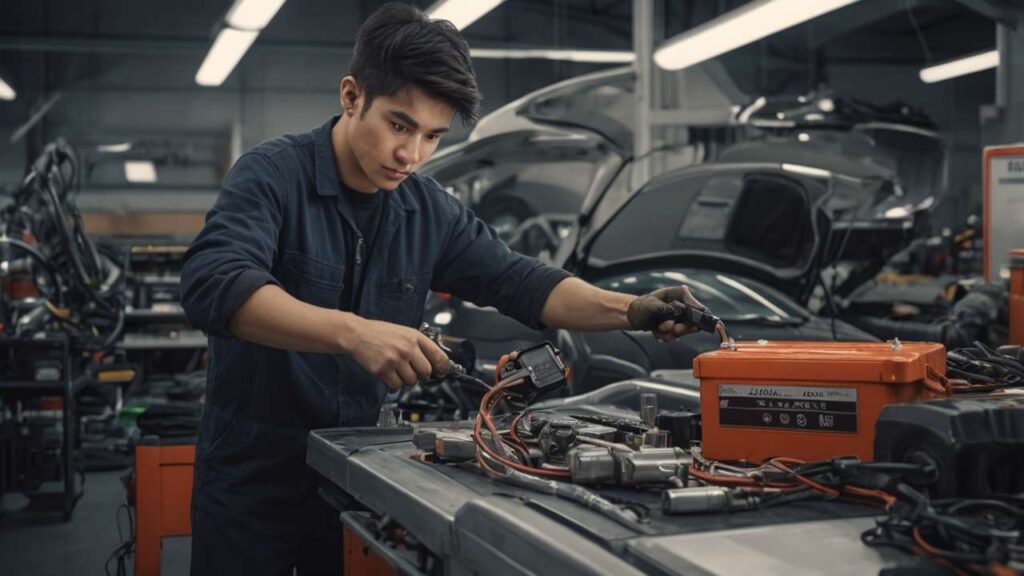If your car refuses to start, it’s so easy to point fingers at the battery. Most of us do. I mean, the car doesn’t crank, so surely the battery must be dead, right? But here’s the truth: what feels like “just a dead battery” can actually be a symptom, not the real disease. Two unsung heroes under your hood—the alternator and the starter—might be the real culprits. And misdiagnosing these parts doesn’t just waste time, it drains money and patience.
I once saw a friend in Raleigh buy a brand-new battery three times in a single year. Each time, the shop insisted the old battery was weak. The real issue? A failing alternator that kept draining power. That’s why trusted, professional diagnostics matter so much. And yes, I’ll be blunt: the best auto repair experts don’t just swap parts. They test, confirm, and then fix the actual problem.
This article goes deeper into how your alternator and starter actually affect your car’s power. It’s not going to sound like a cold manual or an encyclopedia entry—because cars are messy, and so are the problems that come with them. Instead, you’ll get a mix of explanations, personal stories, case studies, and even a bit of “what the experts say.” By the end, you’ll know how to tell the difference between a weak battery and something far more serious.
The Alternator: More Than Just a Power Supplier
The alternator doesn’t get enough credit. Most people think the battery runs everything in the car, but that’s not true once the engine is on. The alternator takes over, feeding power back to the battery and keeping your electrical system alive. Lights, A/C, infotainment, sensors—it’s all running because of this little machine spinning next to your engine.
When alternators begin to fail, the symptoms are surprisingly human-like. Dimming headlights when you press the gas pedal, dashboard lights flickering, a high-pitched whining noise, or that dreaded battery warning light that makes you hold your breath. Sometimes, it’s subtle: the power windows roll slower, or the radio resets itself randomly. If you ignore those hints, the alternator stops charging the battery entirely, leaving you stranded with what seems like a “dead” battery.
Experts at Battery Services Specialists in North Carolina often explain this to drivers: “A battery that dies once could be age, but a battery that dies repeatedly is almost always an alternator issue.” Tools like voltmeters and professional load testers confirm it quickly. And that’s the difference between a reliable repair and a wasteful one.
The Starter: The Silent Gatekeeper
If the alternator is the powerhouse, the starter is the gatekeeper. Its only job? Get the engine spinning so it can run on its own. Simple, but critical. A failing starter often hides behind confusing symptoms:
- A rapid clicking sound when you turn the key.
- The engine not cranking at all, even though the lights and radio work fine.
- Occasional starts that become less frequent until one day it just gives up.
Unlike alternator problems, starter failures usually come without much warning. Mechanics often describe it as “working until it doesn’t.” And once it’s gone, no jumpstart will bring it back. That’s why relying on DIY tricks like endlessly jumpstarting your car can cause frustration. In fact, this breakdown about DIY vs. Pro jumpstarting nails the point: sometimes the issue isn’t the battery at all, and forcing a jump only masks the real failure.
Misdiagnosis: Why “Dead Battery” Isn’t Always the Answer
It’s natural for people to assume the battery is the problem. After all, it’s the first thing we notice when the car doesn’t start. But professional technicians know better: a car battery is often just the messenger. Kill the messenger without finding the source, and the cycle repeats.
One case study: a delivery driver in Charlotte replaced his car battery twice in six months. After the third breakdown, he finally brought the vehicle to a reliable expert. The inspection revealed a starter drawing excessive current, overheating wires, and eventually draining the battery. Replacing the starter—not another battery—ended months of headaches.
The takeaway? Comprehensive inspections save more than just money. They save time, frustration, and unnecessary arguments with roadside assistance. A good battery services provider will never just “swap and hope.” They’ll test, inspect, and explain. That transparency is worth far more than the cost of guessing.
Beyond Batteries: A Bigger Conversation About Car Power
Honestly, this topic opens doors to many other conversations about vehicle care. For example, did you know battery lifespan is deeply influenced by climate? That’s why “The Ultimate Guide to Car Battery Life in North Carolina’s Climate” is such an important read. Hot summers and cold winters don’t just shorten battery life—they stress alternators and starters too.
Or take corrosion and cracks. Most people ignore the white powdery stuff around their terminals until the car won’t start. But “Corrosion and Cracks: A Guide to Battery Health” shows how even small buildup can increase resistance, forcing the alternator to work harder and stressing your starter over time.
And yes, size matters. “Motorcycle vs. Truck Batteries: Why Size and Power Matters” isn’t just a catchy headline—it’s a real issue. Installing the wrong size battery can mislead diagnostics, damage the alternator, or leave your starter struggling. Professionals warn against using cheap universal fits for this reason.
Looking ahead, smart car owners are already talking about eco-friendly practices. “The Environmentally Smart Choice: Why You Should Recycle Your Old Battery” highlights how recycling prevents toxic leaks and even saves you money through rebates. It’s the kind of detail that makes car maintenance not just a responsibility, but also a chance to be a better citizen.
And here’s another angle for future readers: how do alternators interact with modern hybrid systems? Or what’s the role of upgraded starters in stop-start technology cars that shut off at every red light? These aren’t just abstract questions—they’re the future of diagnostics that trusted service experts need to master now.
Tools, Repairs, and Real Expertise
So, how do professionals actually diagnose these issues? It’s not just guesswork. Mechanics use voltmeters, battery load testers, and starter draw tests. Sometimes, they even check wiring harnesses for corrosion or melted insulation. Small details matter.
Repair processes often involve replacing worn brushes in alternators, checking regulator circuits, or swapping a starter motor with a manufacturer-approved unit. Reliable shops don’t just replace parts—they verify everything down to torque specs on bolts and ensure clean grounding points. These steps are what separate the best from “just another garage.”
I’ve seen shady shops skip inspections entirely. They’ll replace the alternator but leave a corroded ground strap in place, leading to repeat failures. That’s the nightmare scenario customers dread. A trusted, expert technician avoids that by taking time, using proper tools, and explaining results in plain language.
FAQs
1. How do I know if my alternator is failing instead of my battery?
Look for dimming headlights, flickering dashboard lights, or repeated dead batteries. A professional inspection confirms it within minutes using a voltmeter.
2. Can a starter be tested at home?
Sort of. You might hear a clicking sound, but true testing requires a current draw test, which only professionals can perform safely.
3. Why do batteries fail so quickly in hot or cold weather?
Extreme temperatures shorten chemical life cycles. In places like North Carolina, hot summers dry out battery cells, while winter cold reduces cranking amps. Both conditions strain alternators and starters.
Your car’s battery is important, but it’s only one piece of the puzzle. Ignoring the alternator and starter is like ignoring the foundation of a house while repainting the walls. It might look fine for a while, but eventually, the structure gives way.
So, next time your car won’t start, resist the urge to assume “dead battery.” Call a trusted expert who knows how to diagnose the whole system. It’s the smarter, more reliable choice.
If you found this guide helpful, hit those share buttons below and let your friends know why the alternator and starter matter just as much as the battery itself. Saving one driver from wasting money on the wrong fix is worth the share.



